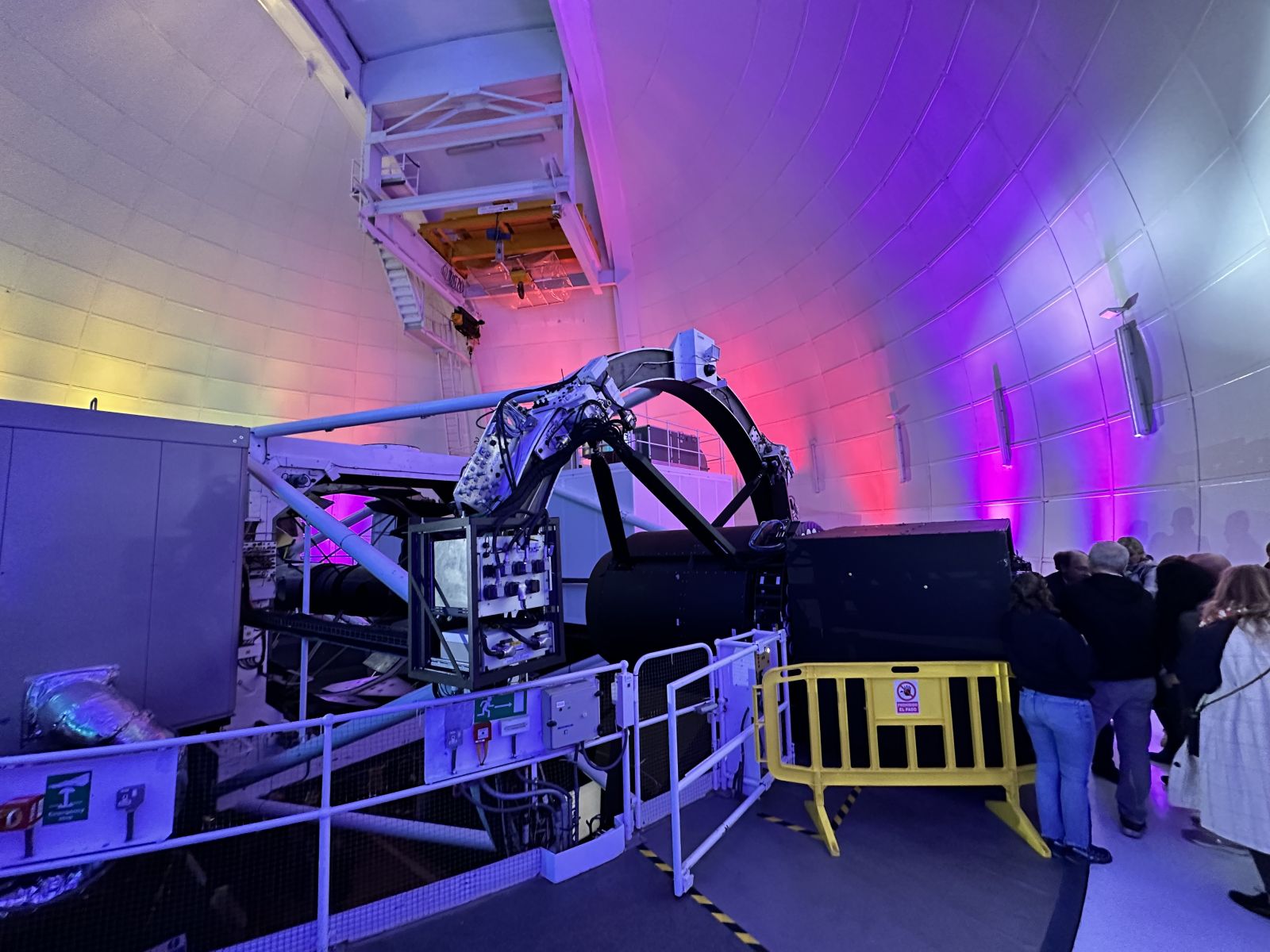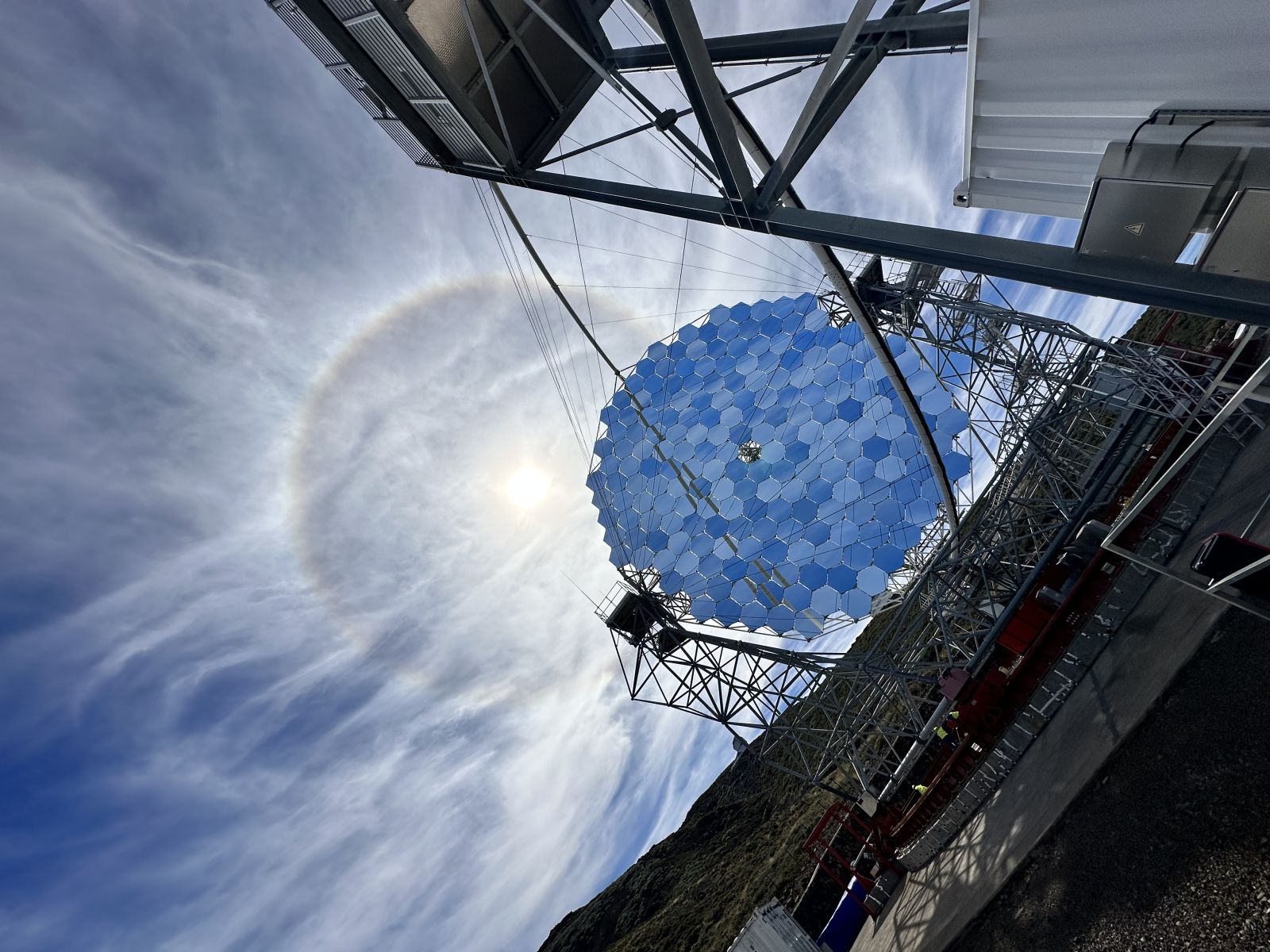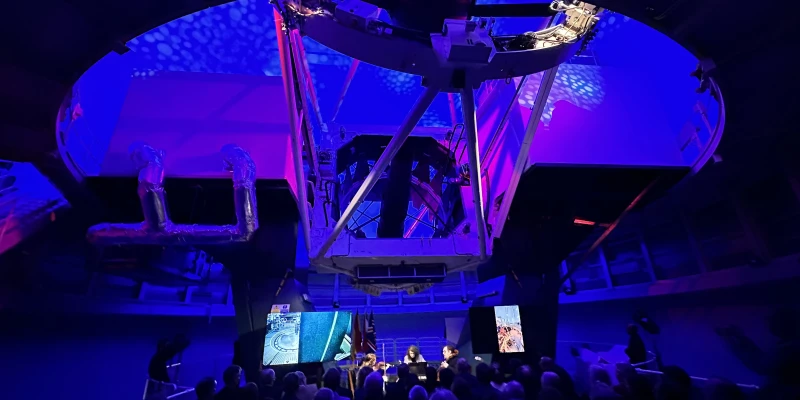On 30 October 2023, the WEAVE multi-object spectrograph was inaugurated at an altitude of 2400 metres at the Roque de los Muchachos Observatory in La Palma. The CSFK Konkoly Thege Miklós Astronomical Institute is part of the WEAVE Consortium and contributed engineering work to this revolutionary instrument. The event brought together some seventy participants from a dozen countries: leaders of science funding organisations, engineers, and researchers. Hungary was represented by Róbert Szabó, Director of the CSFK Konkoly Observatory.
With WEAVE new life is breathed into the 4.2 metre William Herschel Telescope (WHT), which was inaugurated 35 years ago. The once cutting-edge English telescope – later operated by a British, Dutch and Spanish consortium – is now a mid-sized telescope, but the new instrument will bring back cutting-edge research to this particular telescope of the Canary Islands. The WEAVE (William Herschel Telescope Enhanced Area Velocity Explorer) has been placed in the primary focus of the WHT and will record the spectra of 1000 objects simultaneously in a 2-degree diameter field of the sky. WEAVE will execute eight different sky survey programmes. Over the next five years, researchers will use the instrument to record a total of around 12 million spectra of different stars and galaxies, which will also provide information on the chemical and physical state of stars, galaxies, interstellar and intergalactic gas. WEAVE's first light spectra were published in January 2023.


Director Róbert Szabó with the unveiled plaque.
Hungarian astronomers are most interested in three working groups. These are: Galactic Archaeology (GA), SCIP (Stellar, Circumstellar, and Interstellar Physics), and the WEAVE-QSO on quasars. These research areas of Hungarian researchers – studies on the chemical evolution of the Milky Way, pulsating variable stars, and quasars – are linked to three Lendület programs at the CSFK Konkoly Observatory. The first two, led by Maria Lugaro and Róbert Szabó, have already been completed, while the third five-year project, led by András Kovács, started in December 2022.
 .
. 
The WEAVE spectrograph at the pimer focus of the William Herschel Telescope (to the left, in the big black box). Right: the focal plane with the thousand individual fibers positioned by two robots during the previous exposure.
It is interesting to note that the unveiling of the plaque was entrusted to two colleagues: the youngest and the longest-serving. The ceremony was concluded with a champagne toast and a classical music concert. The concert was given by a local three-piece ensemble, Ensemble Sempiternum, who performed three works with violin, cello and keyboard: one from Bach's The Art of the Fugue, the second the opening movement of William Herschel's Second Symphony and a piece by Schubert.
Herschel concert at the dome of the William Herschel Telescope (YouTube link to the video).
On 31 October, the official programme continued with the opportunity to visit several other telescopes, with part of the delegation visiting the dome of the 2.5 metre Isaac Newton Telescope. Inaugurated by the Queen of England in 1967, the telescope will soon be used to make radial velocity measurements with an accuracy of 10 cm/s with the exoplanet-seeking HARPS-3 instrument. The main mirror of the 10.4 m GTC (Gran Telescopio Canarias), which consists of 36 segments, is currently one of the largest optical-infrared telescopes in the world. The delegation was able to witness the lifting of one of the mirror segments. Finally, the acronym CTA stands for the Cherenkov Telescope Array, whose northern member telescopes are also located in La Palma. The Cherenkov radiation, produced by high-energy gamma-ray photons and other particles from cosmic rays, is searched for by a mosaic-mirror telescope with a huge diameter, located in the open sky. The largest of these, 22 metres in diameter, was being tested when we visited. Soon to be added to the network will be instruments installed in Chile, hosted by the European Southern Observatory.


Left: the 10.4m giant telescope, the GTC. Right: one of the units of the Cherenkov Telescope Array with a halo around the Sun.
Participation of Konkoly Observatory at the WEAVE engineering works was supported by the Lendület grant (2014-2019) of Maria Lugaro. All photos and the video was taken by Róbert Szabó.
